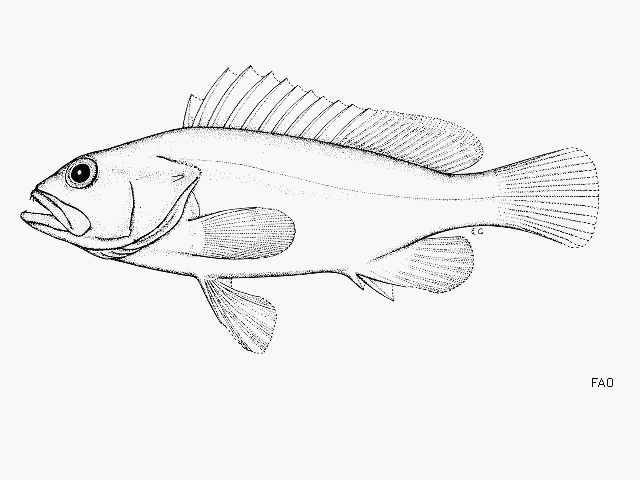| Epinephelidae (Groupers) |
| 17.1 cm SL (male/unsexed) |
|
demersal; marine |
| Eastern Central Pacific: known only from Tonga. |
|
Dorsal spines (total): 11-11; Dorsal soft rays (total): 17-17; Anal spines: 3-3; Anal soft rays: 8-8. Distinguished by the following characteristics: dorsal part of head and snout green; cheeks pale green; body greenish with 7-8 alternating stripes of greenish brown and yellow-orange; dorsal and anal fins greenish, spotted with reddish brown at base; paired fins light greenish without spots; caudal fin greenish with faint reddish bars; body depth 3.4 times in SL; head length 2.6 times in SL; pointed head; interorbital area flat; dorsal profile of head slightly convex; subangular preopercle;, 5 distinctly enlarged serrae at the angle; straight upper edge of operculum; maxilla not reaching past vertical at rear edge of eye; 2 rows of teeth in midlateral part of lower jaw; caudal fin rounded; ctenoid lateral body scales (Ref. 089707). |
| Nothing is known of its habitat and biology (Ref. 5222). Absence of additional specimens is puzzling. The only specimen was obtained from the natives of Tongatapu by J. Quoy and P. Gaimard during the expedition of J. Dumont d'Urville, 1826-1829. |
|
Data deficient (DD); Date assessed: 22 November 2016 Ref. (130435)
|
| harmless |
Source and more info: www.fishbase.org. For personal, classroom, and other internal use only. Not for publication.

